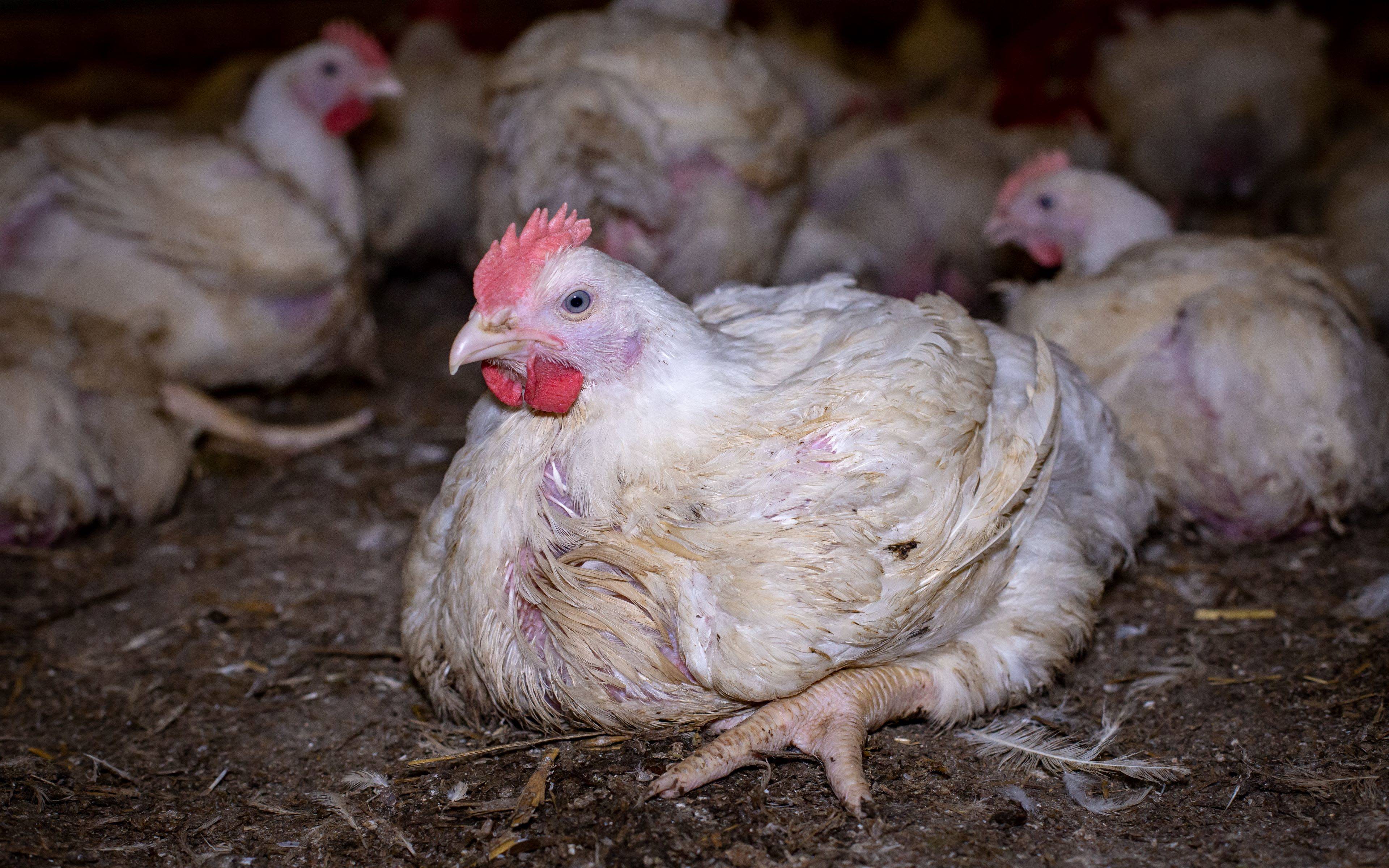White Striping: The strange disease affecting nearly all chickens raised for meat





Chicken producers care about their profit over everything else, that's why they prefer to raise birds that have been manipulated to grow so large at an extremely unnatural rate.

The bigger the chicken, and the faster they can go to slaughter, the more money they get. They don't care about the conditions these animals live in, how this explosive growth affects their health, or what it means for the consumers who buy their product. The meat industry exists for profit, and they don't care about those harmed in the process, including animals, their employees and even their own customers.
Transcript
Narrator: Have you ever noticed the white, fatty stripes on chicken breasts in a supermarket? Those aren't just natural lines that come from the cut of meat. Those represent white striping disease, and they can be found in 99% of chicken in supermarkets across the US.
So where does this white striping disease come from? And what does it mean for the animals who had it or the consumers who eat it?
In the US, nine billion chickens are raised and killed for their meat every single year. And 90% of them come from just two breeds, the Cobb 500 and the Ross 308. These breeds are so popular because they grow really large, really fast. Chickens are twice as big today as they were 100 years ago, and they get that size in less than half the time.
The food industry makes millions of dollars off these fast-growing breeds, but the chickens themselves face serious health issues as a result of their fast growth. Sometimes their legs can't even hold their own body weight and buckle beneath them.
Aside from the animal welfare implications, this fast growth is also the cause of a number of diseases such as spaghetti meat, Woody breast, green muscle disease, and the most widespread of them all, white striping disease.
How does it happen? The exact cause of white striping is still unknown, and researchers are actively trying to understand the condition.
But what we do know is that white striping usually shows up in the enlarged breast muscles of chickens who grew at explosive rates. When muscles grow at a normal rate, they get all the oxygen and glucose they need. Sadly, that's not the case for fast-growing chickens, like the Cobb 500 and the Ross 308.
Scientists suspect that because these chickens' muscles grow so large so quickly, it becomes harder and harder for blood to reach every single muscle fiber. The muscle fibers are getting bigger, but the blood vessels are staying the same. As a result, not enough oxygen or nutrients reach the chickens' muscles, especially their breasts. Also, with less blood flowing through the muscle, metabolic waste doesn't get removed as effectively as it should. And it starts to build up, which causes inflammation.
The immune system responds by sending white blood cells to the areas that aren't getting enough oxygen or waste removal, but the damage to the muscle is already beyond repair. So some of the muscle fibers start to shrink while others start to die. And muscle that can't be repaired is replaced by fat and connective tissue.
This is how white striping starts to happen. When the chicken's muscles are so severely and persistently strained at a cellular level, their bodies are unable to repair the damage. So fat and connective tissue infiltrate the muscle forming distinct white stripes.
The white striping you see on the boneless, skinless chicken breast at the grocery store is proof that the chicken grew so fast that their muscles couldn't keep up. This is yet another sign that we cannot treat animals like meat-making machines, and that it is time for a change.
Thankfully, more and more food companies are switching to other breeds of chickens, which grow at a slower, healthier pace. Compassionate consumers are letting companies know that they care about the welfare of these animals and they're concerned about these diseases.
On top of that, the movement to leave animals off of our plates is growing, which means fewer chickens will suffer from fast growth and the diseases it's connected to. Together, we're headed towards a brighter future for chickens.
Credits
3D animation credit: www.rellimproductions.com





